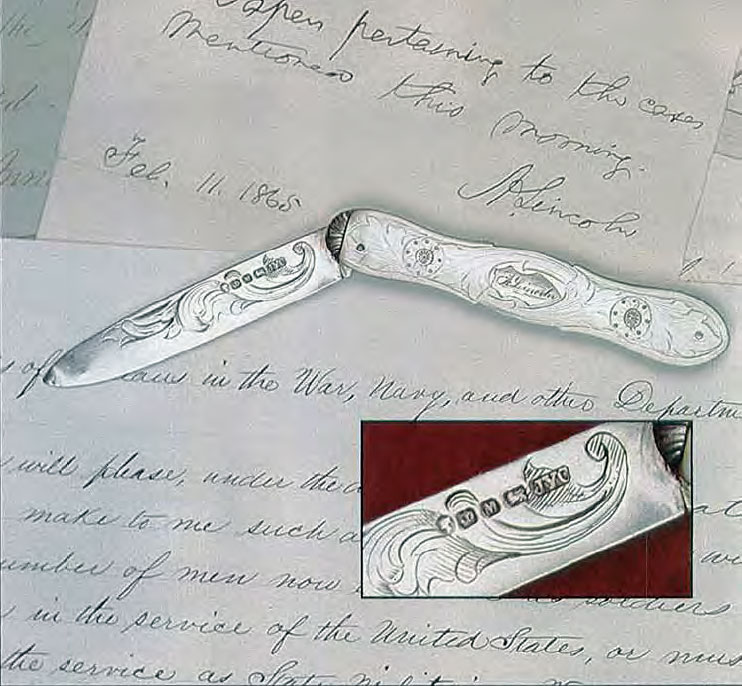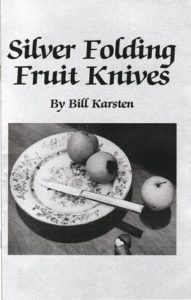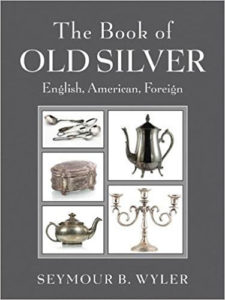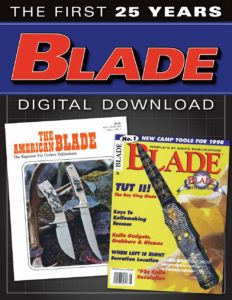

Editor’s note: This article originally appeared in the December 1992 issue of BLADE magazine. Learn more about timeless knife history with this collection of back issues.
Is This an Honest-to-Goodness Knife for Honest Abe?
A silver folding fruit knife owned by U.S. President Abraham Lincoln? It seems too good to be true. But there it is, bigger than life on display at the Lincoln Museum in Fort Wayne, Indiana.
It all started with a letter to BLADE magazine from William Graves, Sr. He wrote that he’d seen a picture of the knife in Lincoln Lore, the official publication of the Lincoln Museum, a part of the Lincoln National Corp. All the signs seemed right; the hallmarks on the blade, the carved pearl handle, even Lincoln’s name engraved on the shield. But the question remained: Was the knife really Lincoln’s?
Abraham Lincoln’s Knives Can Fetch $100,000
Acting museum director Ruth Cook said the knife was bought by television executive producer Harry Ackerman at the auction of Oliver R. Barrett’s Lincoln collection in 1952. Ackerman’s discovery of the knife is a story in itself. He bought Lincoln’s legal wallet, inside of which, unknown to the seller or buyer, was the knife. A collector’s dream come true!
Cook said the Lincoln National Corp., subsidiary of Lincoln National Life Insurance Co., bought the wallet and knife from a dealer. She could not divulge how much was paid for both items, though she said the price was in the five-figure range. She said neither item is for sale. Another knife-a multi- blade pocketknife-that belonged to Lincoln sold alone at auction for $99,825 at Sotheby’s in New York in 1989, as reported in the August 1989 BLADE magazine.
Even though Cook said there is no documentation of when Lincoln received the folding fruit knife or who gave it to him, it reportedly has been authenticated. There are photographs of it in famed poet and biographer Carl Sandburg‘s Lincoln volumes and elsewhere.
History of Fruit Knives

But were the principals involved familiar enough with the special “hallmark language” of fruit knives to know if this particular fruit knife could have been made for Lincoln?
We decided to check with Bill Karsten, author of the only known book on the subject, Silver Folding Fruit Knives, to flush out the facts.
According to Karsten’s book, folding fruit knives first appeared in France in the 17th century. They often had blades made of silver or gold for corrosion resistance as stainless steel was not yet available. Men often gave them as presents to their wives or girlfriends.
In England, silver fruit knives flourished after the silver assay offices opened at Sheffield and Birmingham in 1773. The blades were hallmarked following assay (a procedure analyzing the blade’s silver content) in accordance with the system conceived in London during the early 14th century.
A series of five small stamped marks disclosed the city of origin, the maker’s initials, the year of assay, the sterling silver (92.5 percent) content and the duty stamp (Karsten said the latter was no longer carried after the duty was abolished in 1890).
How Lincoln’s Knife Measures Up
The hallmarks on the Lincoln knife blade are of a profile of Queen Victoria, a crown, the capital letter “M,” a lion and the initials “JYC.” Karsten said the “JYC” stands for the maker, John Yeomans Cowlishaw, who was so well thought of that a street in Sheffield, Cowlishaw Lane, is named after him.
Karsten said the queen’s profile means the duty on the knife had been paid indicating the knife was made pre-1896 the crown indicates the knife was made in Sheffield, and the lion means the blades are made of silver.
The Mysterious M Holds Key to Lincoln’s Fruit Knife

But it was the “M” hallmark for the year of make that intrigues Karsten. He said the capital letter or uppercase “M” meant the-knife was made-either from 1855-56 or from 1879-1880. If it were made between 1879 and 1880, then the knife could not have been Lincoln’s since he was assassinated in 1865.
Moreover, Karsten said, Cowlishaw made his last knife around 1920, which indicates if he made a knife in the mid-1850s, his knifemaking career spanned six-and-a-half decades. If that’s true, it’s a remarkable record for working longevity at that point in history.
Some checking by Karsten in The Book of Old Silver: English, American, Foreign by Seymour B. Wyler revealed that Cowlishaw was admitted as a maker of silver folding fruit knives to the Sheffield Assay Office in 1854. So he could have made the knife in 1855-56.
However, Karsten said the “M markings on the knives made in 1855-56 are thinner than those made in 1879-80.”
“If I had to make a choice I would say the shape of the ‘M’ indicates the knife was made in 1879-80,” he said, but he could not be positive and would not discount that the knife could have been Lincoln’s on that basis.
Mistakes Don’t Necessarily Discredit Lincoln’s Fruit Knife

Next came a question about the order the hallmarks appear in on the blade.
Quoting from Wyler’s book, Karsten said on almost all fruit knives made from 1844-1921 the crown is the first hallmark to appear at the left. On the Lincoln blade the queen’s profile appears first at the left. However, Karsten said there is a picture of a Cowlishaw knife made in 1855 with the hallmarks in the same order in Karsten’s book.
Moreover, he said mistakes in the application of hallmarks were made and the Lincoln knife may be an example.
“They did make boo-boos,” he noted. “I’ve found several of them. They’re not normal but the mistakes don’t discount the knife’s authenticity, either.”
Simon Moore, a leading English authority on fruit knives, agreed with Karsten’s assessment.
“We do often get mistakes like that. There might be a whole batch of blades with marks jumbled up higgledy-piggledy,” he said. “They might go stamping away before they’d realized their mistake but by then they might’ve run off quite a few blades that way.”
As for the shield style and the engraved blade, Karsten said he had seen examples of neither on other Cowlishaw knives. Concerning the “A. Lincoln” engraved on the shield, Karsten said it was probably done some time after the knife was made. He said if the knife were made especially for Lincoln by Cowlishaw, Cowlishaw may have engraved the name on the shield later.
The Verdict for Lincoln’s Fruit Knife
Dr. William Rosenthal, a leading fruit knife authority who donated a huge collection of fruit knives to the National Knife Museum, said the shield was probably engraved after the knife came to America.
“The fancy shape of the handle, the engraved bolster, these sort of things say to me Cowlishaw well could have made the knife,” Karsten noted. “And the knife very well could have been Lincoln’s.”
 NEXT STEP: Download Your Free KNIFE GUIDE Issue of BLADE Magazine
NEXT STEP: Download Your Free KNIFE GUIDE Issue of BLADE Magazine
BLADE’s annual Knife Guide Issue features the newest knives and sharpeners, plus knife and axe reviews, knife sheaths, kit knives and a Knife Industry Directory.Get your FREE digital PDF instant download of the annual Knife Guide. No, really! We will email it to you right now when you subscribe to the BLADE email newsletter.






